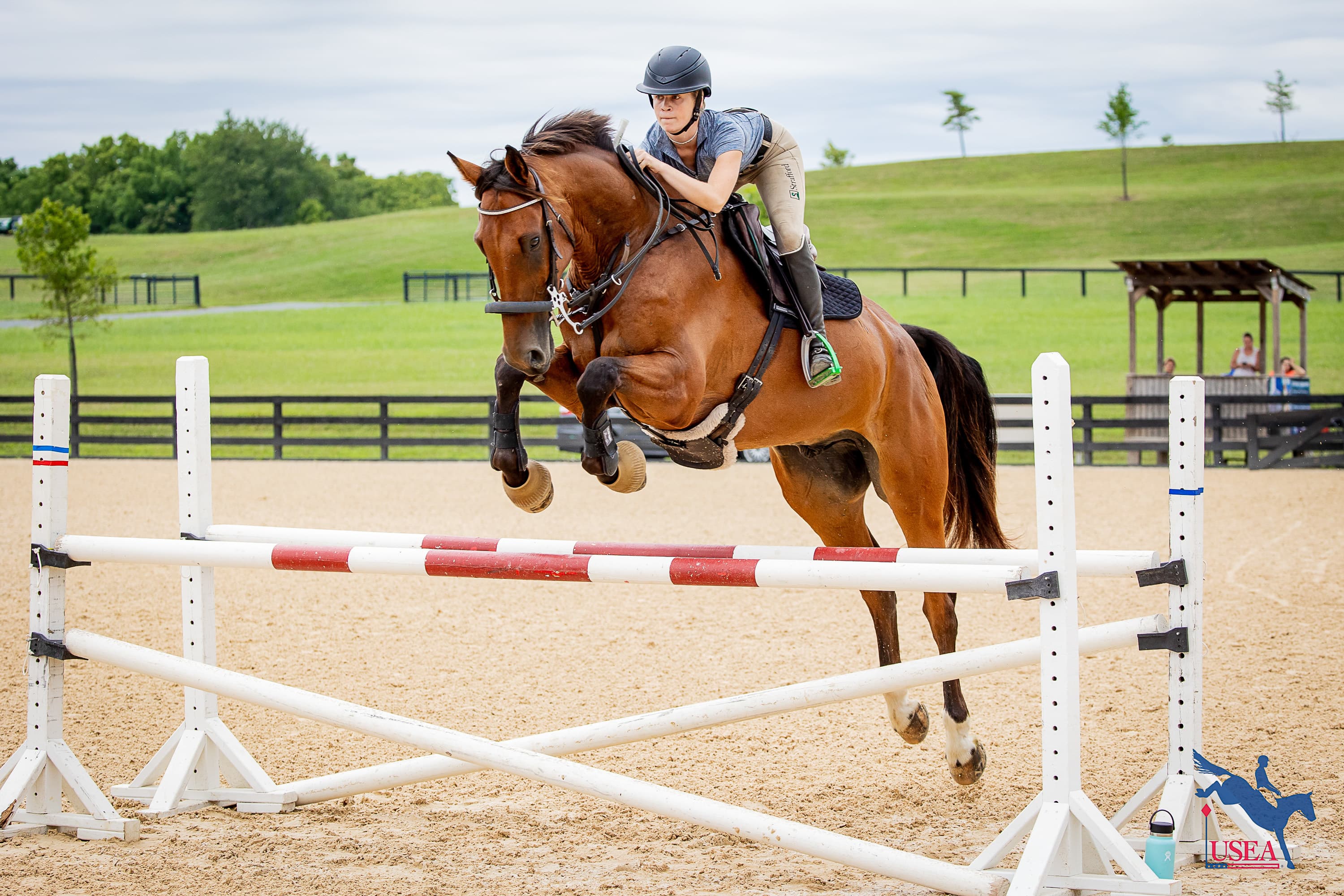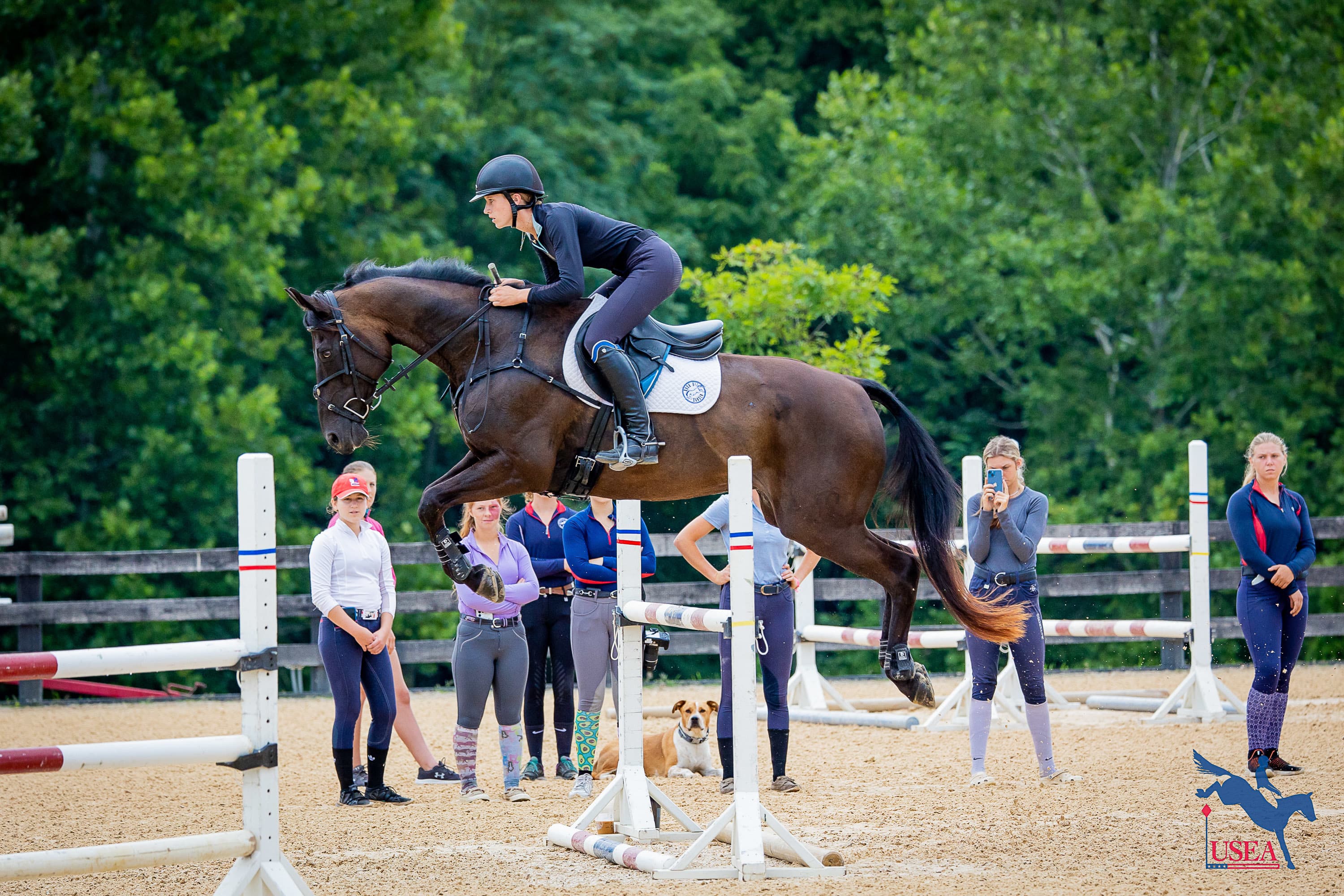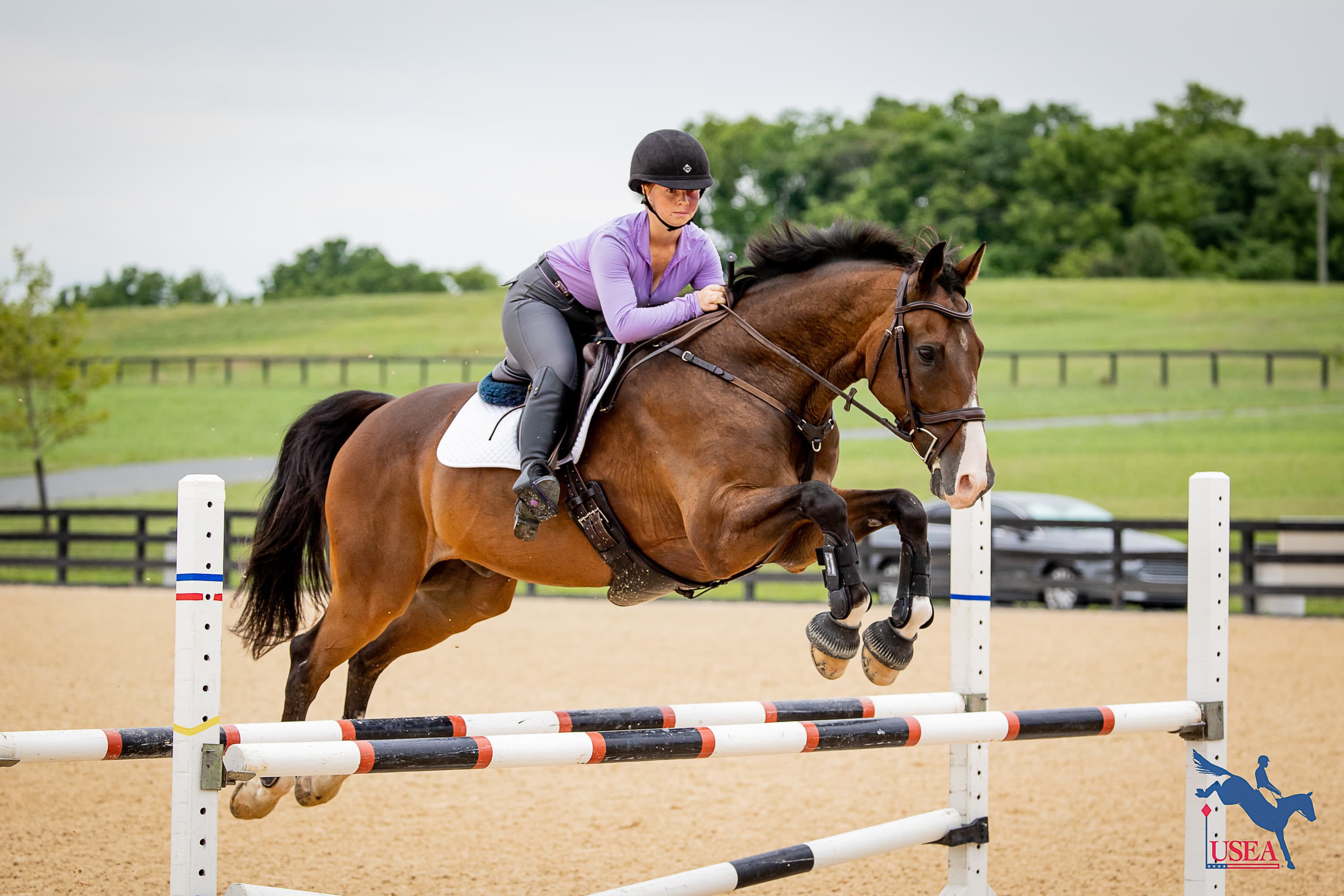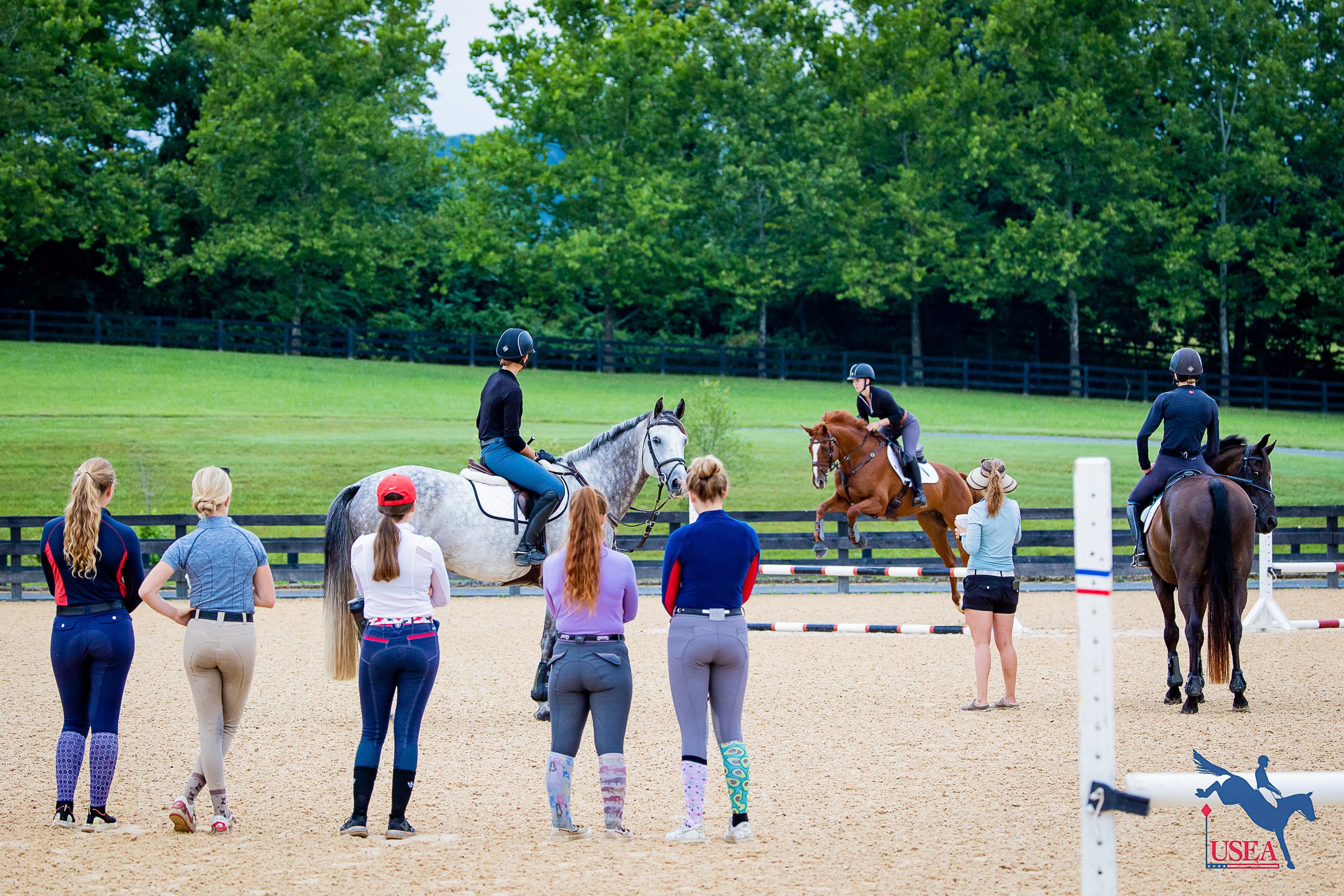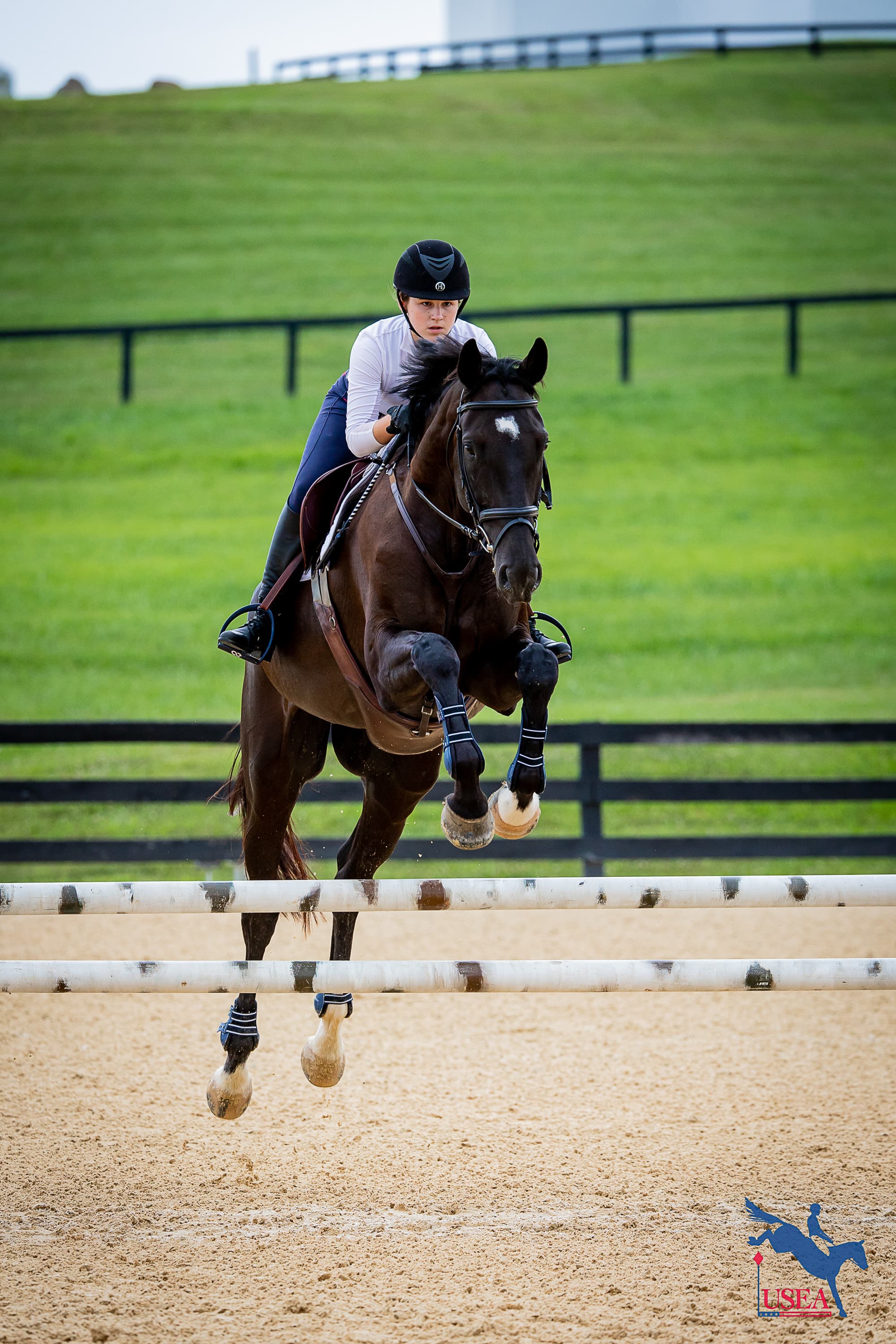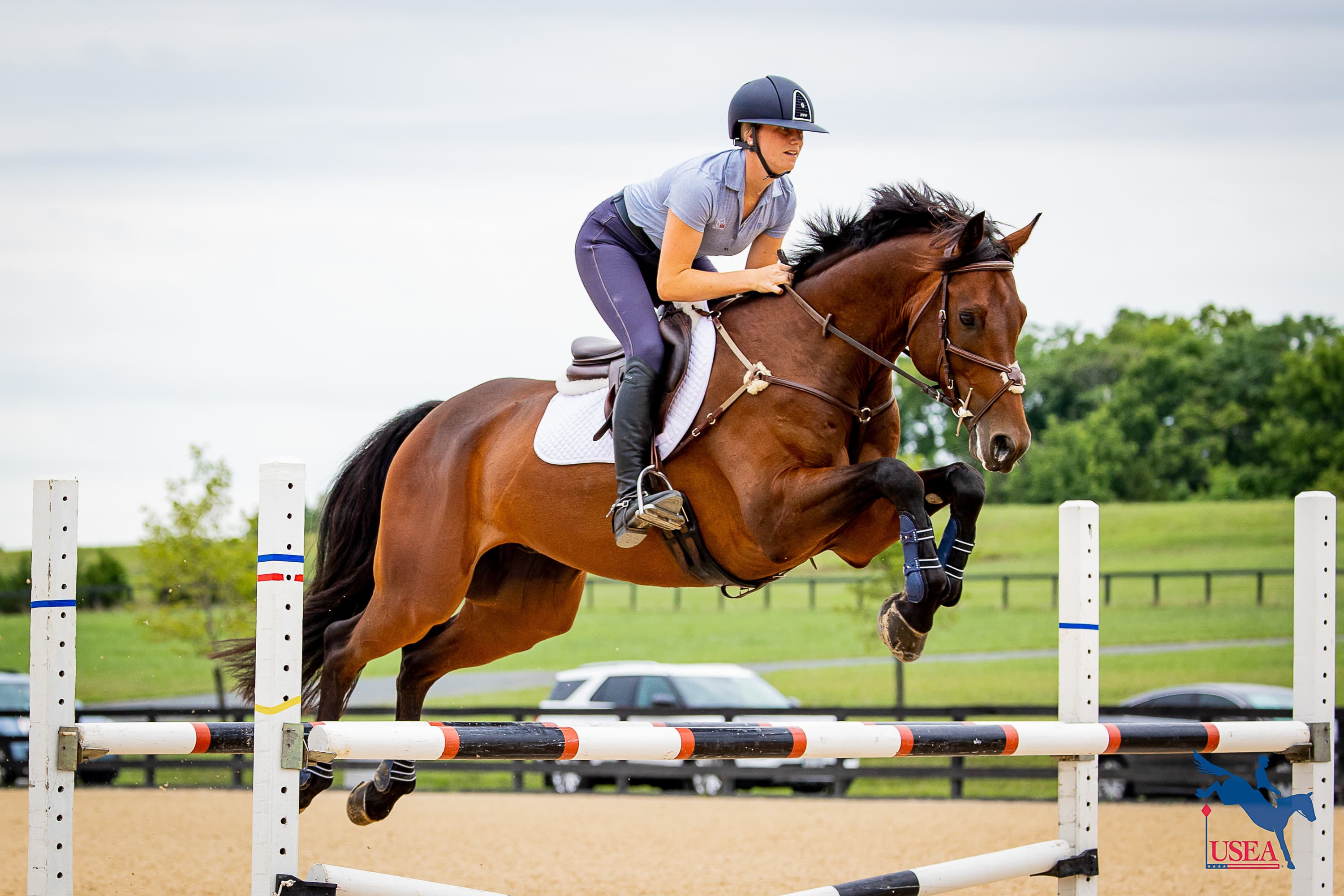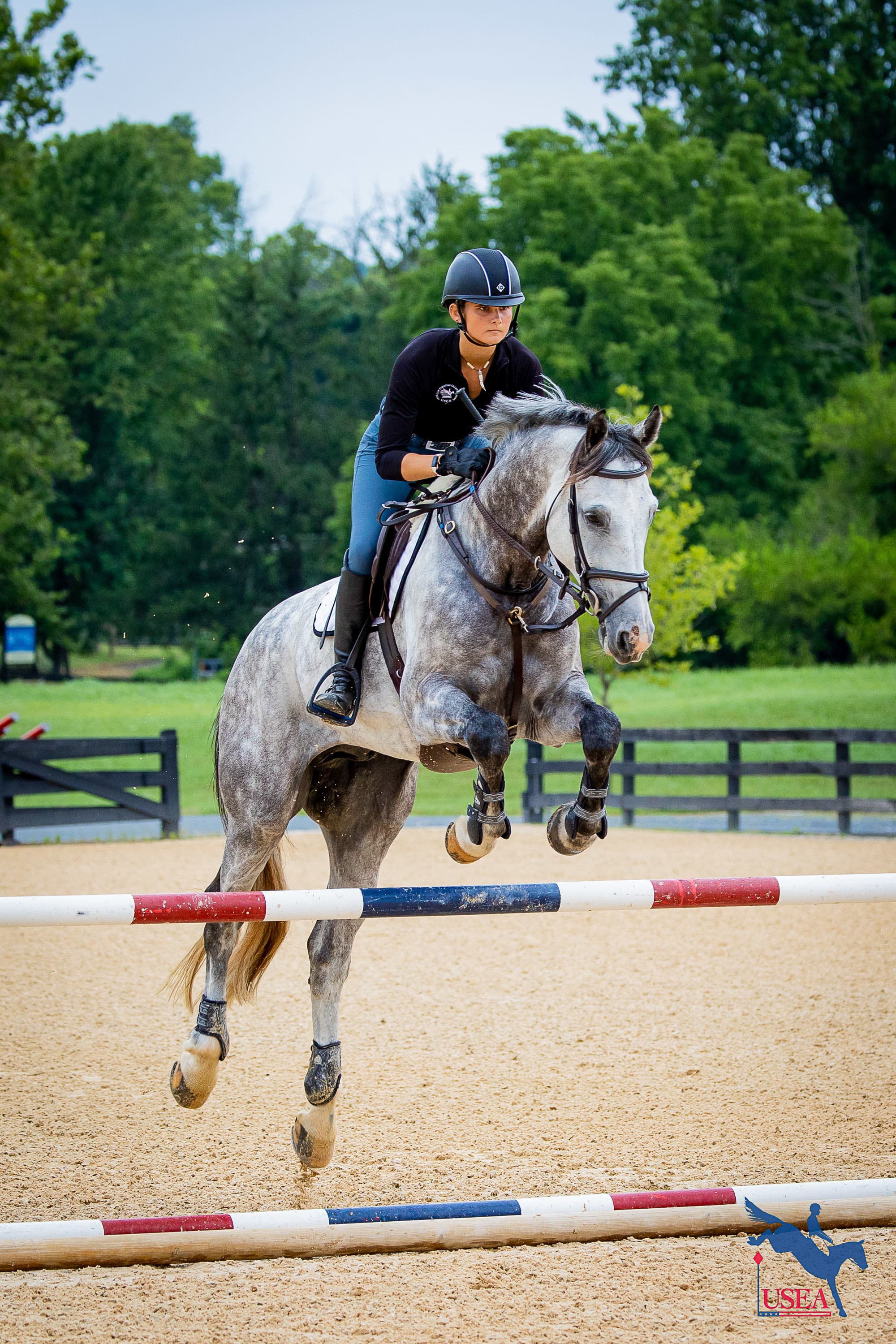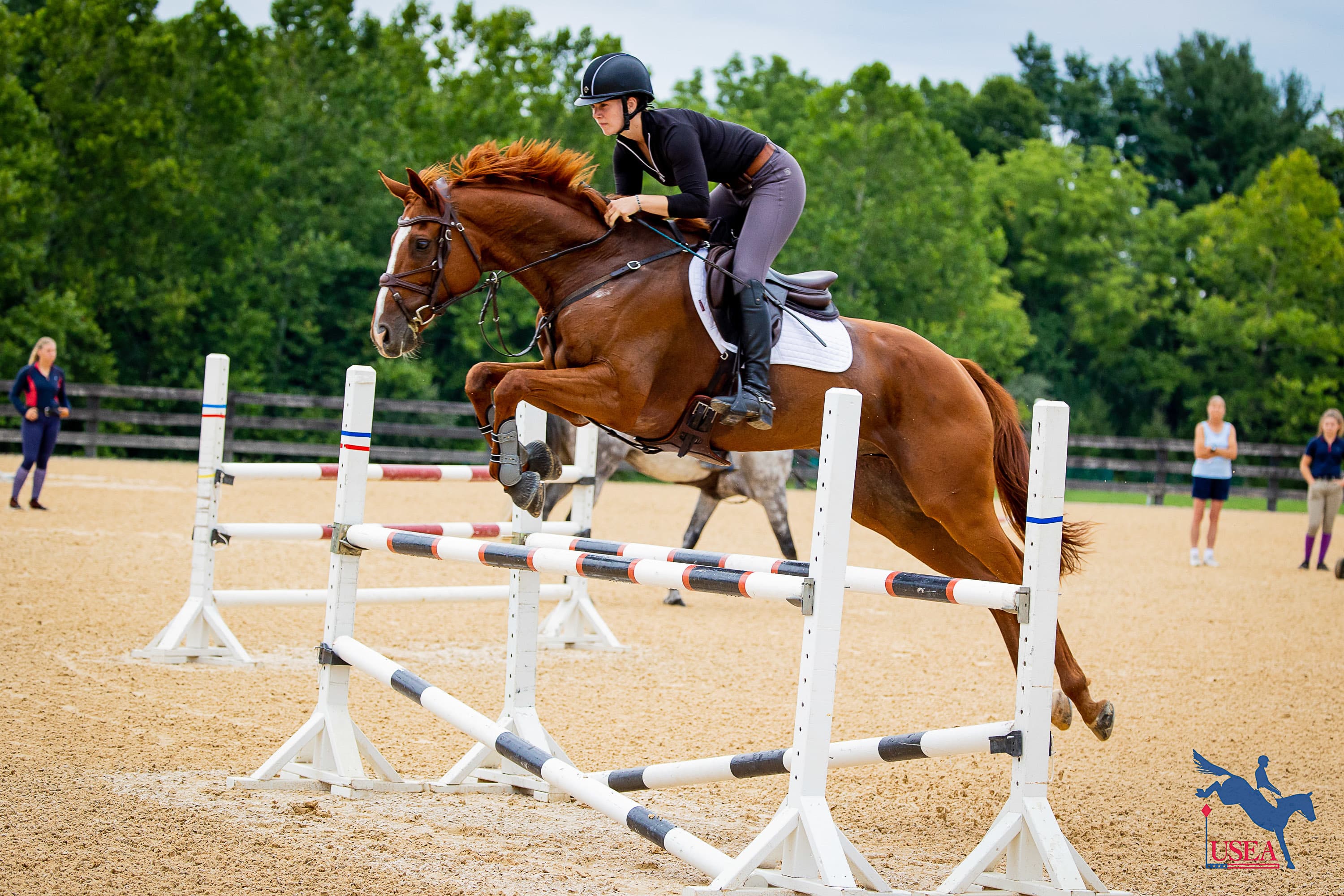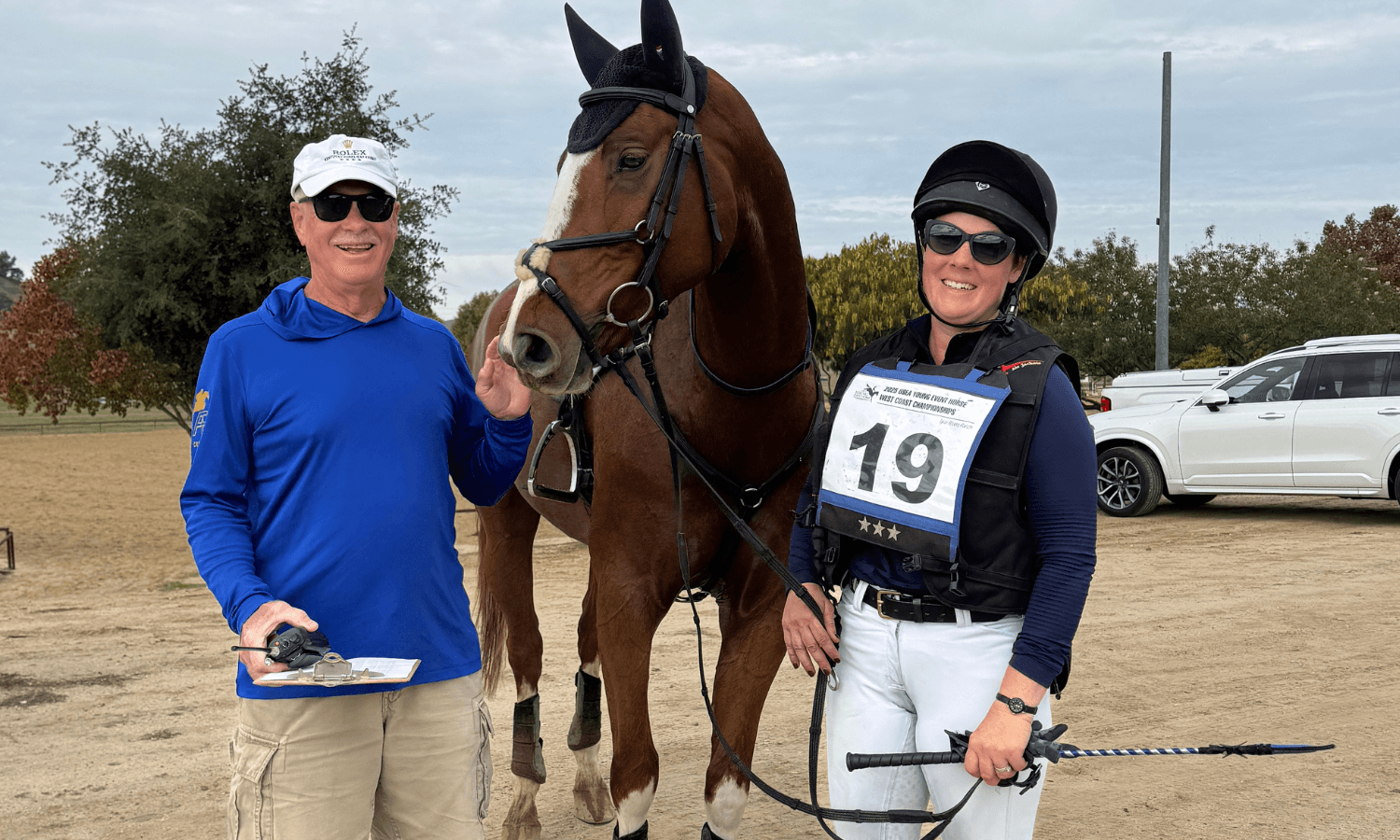Emerging Athletes Focus on Balanced Adjustability for Day 2 of the EA21 Regional Clinic at Morven Park
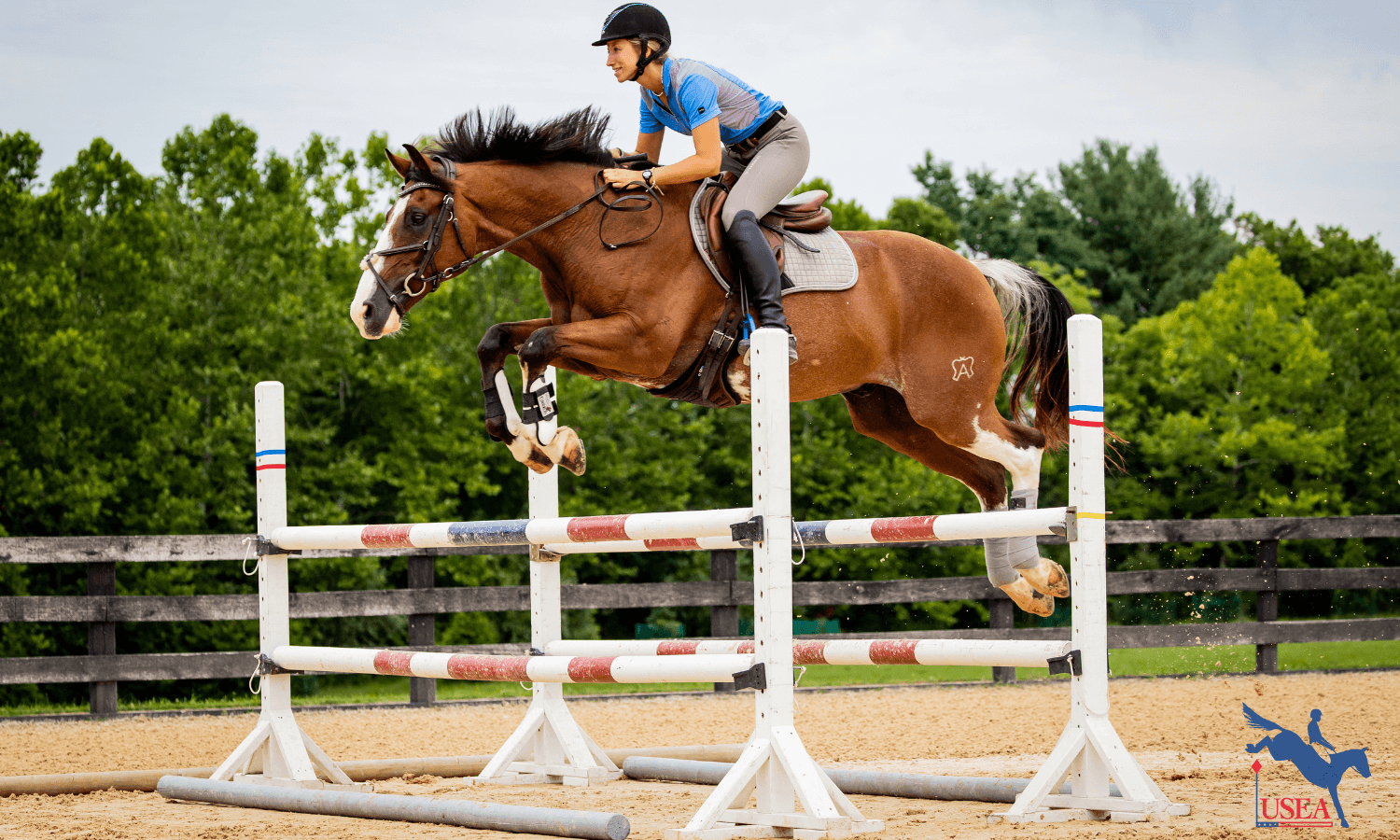
During day two of the USEA Emerging Athlete Clinic (EA21), Pan-Am gold medalist and ICP instructor Shannon Lilley connected the dressage work from Day One with a series of over-fences exercises. Their first exercise was two verticals set on a figure-eight. The goal of the exercise was to use the arena fenceline to get square to the verticals. This could be achieved by not overbending in the turns. EA21 Coach Lilley suggested coming out of the figure-eight loop with slight flexion to the outside, which enabled the rider to get their hips and the horse's hips straight. She was looking for a balanced, rhythmical canter that stayed the same around the figure-eight.
The next exercise included three jumps in a line: a vertical, three strides to an oxer and three strides to a vertical. The verticals were kept at 2'3" and the oxer was increased in height and width every two passes. ICP Instructor Lilley explained that the width of the oxer creates shape in the horse, as it encourages the horse to come up and arch nicely over the top of the fence. For a few horses, ground lines were placed before takeoff and after landing to encourage more "jump" and lift in their stride.
This exercise resonated with clinic participant Adalee Ladwig, "I liked the line with the three jumps with three strides in between. It really made me have to keep my horse straight and then think, got to work on the middle [over the oxer] and then the landing too, because you still have the third jump. A lot of [Lilley’s] exercises were really good for my horse to get him balanced and more up in the bridle, as we did with the dressage.”
Next up was an exercise for adjustability and rideability. A vertical and an oxer were set six and a half strides apart. The riders needed a more open, going canter to accomplish six strides. Lilley coached the riders to soften their elbows to allow the horse to lengthen their step and cover more ground coming out of the corner, instead of chasing the distance or kicking down the line. The riders shortened the canter to do the line in seven, then eight strides using their bodies and the half halts that were fine-tuned in yesterday's dressage lessons.
Audrey Littlefield enjoyed finding the connection between the dressage and jumping lessons. "This weekend went really well," she said. "It was super fun to feel how he was on the flat and how much that related to my jumping. That was probably my biggest takeaway; it was really simple things that we had to work on, keeping my shoulders back, allowing him to move forward with my hands and letting him come up. Shannon was a great help and really encouraging."
The riders focused on balance and turning with the following three-fence grid. The jumps were set at right angles to each other on an S curve. Lilley had the riders square off their turns on the four to five strides between fences so they were straight on their approach to all three. A few riders overshot the turns and had to reapproach, and Lilley reminded them to use their outside hand and leg to turn rather than solely relying on the inside rein.
Ayden Schain's horse is a 17.3-hand Zangersheide gelding and she appreciated the turning and balancing exercise. "It was really helpful when Shannon talked about keeping the ears up, and ultimately when my position was up and his ears were up, everything just came out of the turns," Schain said. "That was super helpful, to really feel that now. That'll be great going forward into our season."
Once the riders and their horses were confident with the exercises, Lilley gave them one of two courses to ride, based on what the pair needed to focus on more. "[I] would [normally] do the exercises the first day, and the course work and the lines the second day," she said. She wanted the combinations to learn as much as possible over the two-day clinic and was open to sharing advice and answering questions.
Piecing the exercises together into a course allowed the riders to practice what they covered in their dressage lessons yesterday and resulted in positive feedback about Lilley's clinic coaching style. "I really liked when we put courses together; she [Lilley] really had us stay on our feet and slow down and think about what we were doing," shared Caitlin O'Roark. "She worked on their shape and their rideability [by] staying positive to things. My coach Lauren Nicholson always tells me the slower you go, the faster you get there. I always keep that in the back of my mind and this weekend, I really felt like we practiced that. Shannon talked a lot about the flatwork and the jumping in the corners. Be patient, keep the rhythm, stay slow."
The athletes benefited from riding together and watching their contemporaries, one of the goals of the new EA21 program. "This weekend was full of getting to know more of my peers and focusing on my horse and getting him more ready for the upper level, pushing him and getting him more up since he's a downhill horse," Ladwig said. "There's a lot of pressure surrounding getting up to the top quick, and it was good to see everybody encouraging you to take your own pace and get there in your own time."
Lilley was impressed with the riders and will have a tough time narrowing down the group for recommendations for the National Camp. "Today was good; it was a lot of information for the riders. I thought all the riders were quite impressive. Some were really strong in the jumping; they all got better," she shared in her weekend summary.
For more information on the EA21 Regional Clinics, click here.
